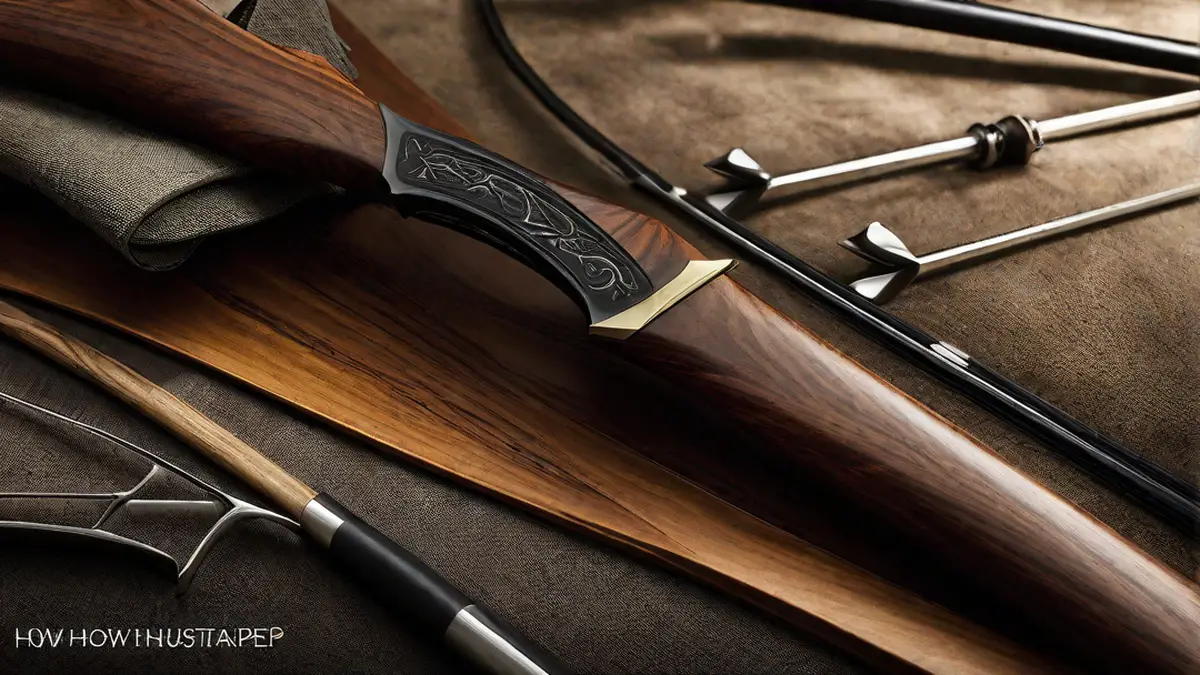Today, I want to share with you my personal journey of making a good hunting bow. As an avid outdoorsman, hunting has always been a passion of mine. There’s nothing quite like getting out in the wilderness, testing your skills, and bringing home a fresh harvest. And what better way to enhance that experience than by crafting your own hunting bow? It’s not just about the end result, but also the satisfaction and connection to the process.
Getting Started
When I decided to make my own hunting bow, I knew I was in for a challenge. It requires a unique set of skills and a lot of patience. The first step was to gather the necessary materials. I opted for a traditional-style longbow, so I needed a suitable piece of wood. After doing some research, I chose hickory as it’s known for its strength and flexibility.
Next, I needed a bowstring. I decided to go with a high-performance synthetic material called Fast Flight. It’s known for its durability and speed, both crucial factors for a successful hunt. I also gathered some basic tools like a draw knife, rasp, sandpaper, and a tillering tree.
The Process
With all my materials and tools ready, I set off on the exciting journey of crafting my hunting bow. The first step was to shape the bow stave. I carefully removed the bark and used the draw knife to shape the rough outline of the bow. This step required precision and attention to detail, as any mistake could result in an imbalanced or weak bow.
Once the bow stave was shaped, it was time to start tillering. Tillering is the process of removing wood from the bow to achieve an even bend. I used the tillering tree, which allowed me to gradually increase the draw weight while monitoring the bow’s performance. This step took patience and constant adjustments to ensure the bow would perform optimally.
After several hours of tillering and fine-tuning, my bow began to take shape. It had a smooth curve and a satisfying amount of flex. I then sanded the bow to perfection, giving it a smooth finish that felt great in my hands.
Testing and Fine-Tuning
With the bow complete, it was time for the real test – taking it out for a hunt. I attached the Fast Flight bowstring, making sure it was properly aligned and had the right amount of tension. Slowly, I pulled back on the string and felt the bow’s power. It had a smooth draw and released the arrow with impressive speed.
I spent countless hours practicing with my handmade bow, refining my shooting technique, and adjusting the bow’s tiller and brace height to achieve optimal performance. It was a process of trial and error, but with each adjustment, I gained a deeper understanding of my bow’s capabilities.
Conclusion
Making a good hunting bow is a labor of love. It requires patience, skill, and a deep connection to the craft. But the end result is priceless. Not only did I create a powerful tool for my hunts, but I also gained a deeper appreciation for the art of bow making.
So, if you’re up for a challenge and want to enhance your hunting experience, I highly recommend making your own hunting bow. It’s a journey that will test your skills, push your limits, and ultimately reward you with a one-of-a-kind masterpiece.
